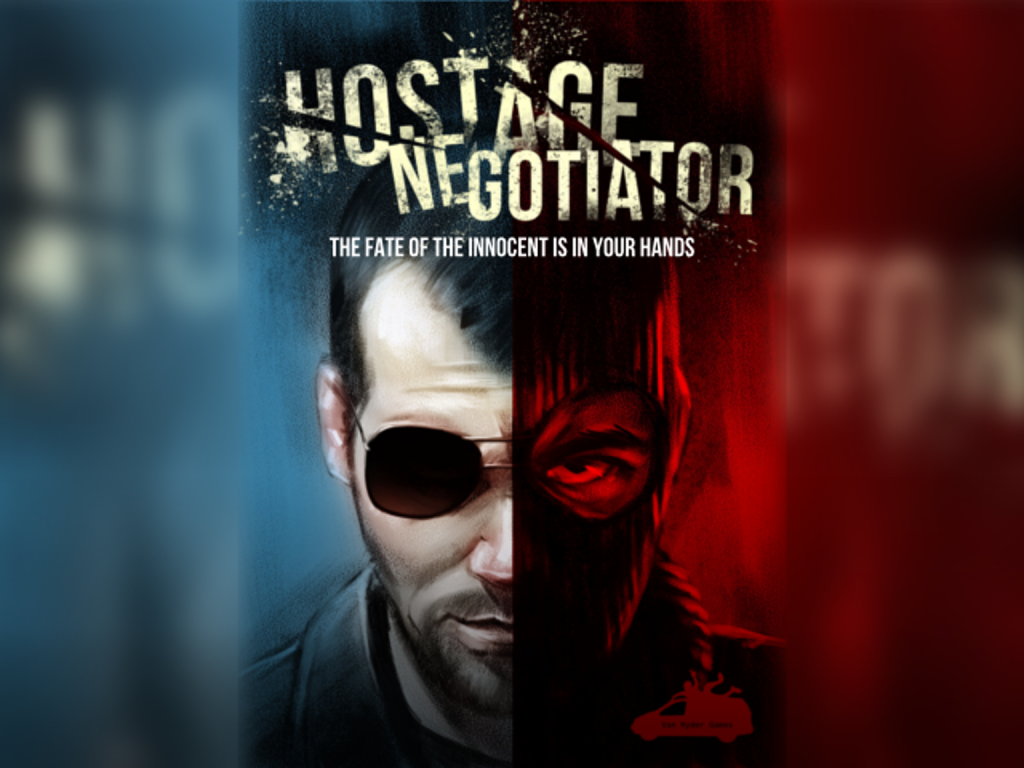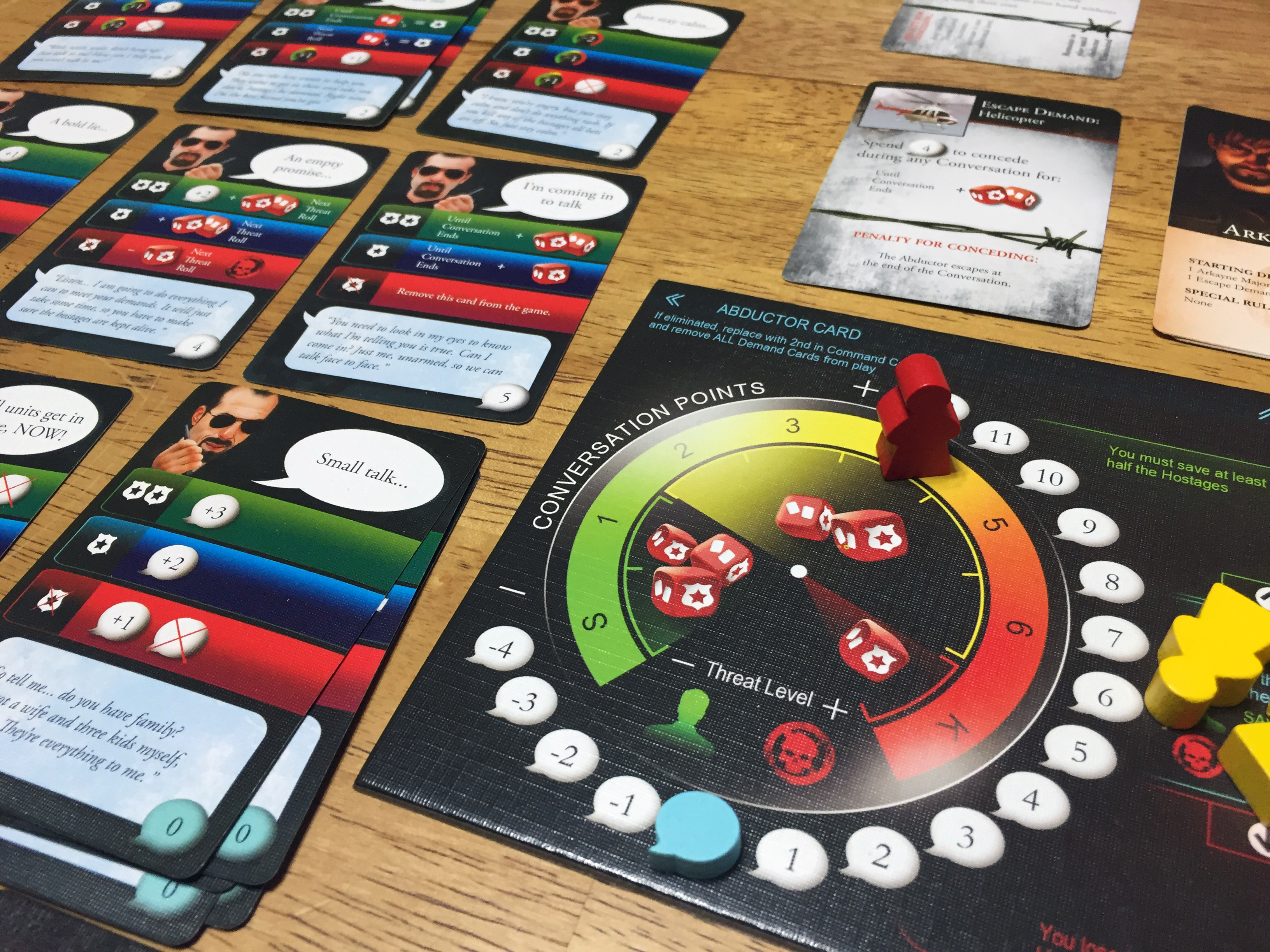Things aren’t looking too good for the hostages. Not only is the captor pissed off, but you’re running out of time in meeting their demands. In this single player game, you’re exactly what the name of the game suggests, a hostage negotiator. Through buying cards and by rolling dice, you’ll attempt to defuse the situation and hopefully bring everyone out alive. Are you up to the challenge? Only time (and some luck with the dice) will tell.

Hostage Negotiator: 1 Player, Ages 15+, Average Play Time = 15-30 Minutes
Components
The game includes 64 cards of varying types, 5 custom dice, 15 yellow hostage pieces, 1 red threat level marker, 1 blue conversation point marker, 1 hostage negotiator tableau, and a rulebook.
Setup & Gameplay
Firstly, the player will choose (or randomly pick) an abductor card which is placed to the left of the tableau. The second in command card is then placed underneath. The major demands and escape demand decks are shuffled separately, with the appropriate number being dealt face-down above the tableau…the rest are discarded without looking. The yellow hostage pieces and remaining tokens are placed in their appropriate spaces. The red terror deck is shuffled and ten are dealt face-down, with one random gold pivotal terror card placed on the bottom of that deck. The player gets the six starter conversation cards to form their starting hand. The rest are sorted into piles by type.
The game is broken up over a series of turns and each turn has three phases:
1. Conversation Phase – Where you play and resolve cards from your hand to influence the threat level, earn conversation points, and save hostages. Most of these cards are resolved via a die roll. The lower the threat level (green, yellow, red), the more dice you can roll.
2. Spend Phase – Where you spend conversation points earned this turn on cards available in the pool. You cannot play cards played during the conversation phase. Some cards are worth “0” but again, you’d only be able to buy them every other turn as you can’t buy cards played that turn. Once you’re done buying cards for your next turn, the conversation points are reset to “0” and you’ll place any played cards back into the buying pool.
3. Terror Phase – A terror card is revealed and resolved. If no more cards are in this deck, then ALL the hostages are killed and you lose the game.
The game continues until it ends in either victory or defeat.
Victory – ALL of the following must be true:
1. There are no hostages left in the pool.
2. At least half of the hostages were saved.
3. The abductor has been captured or eliminated.
Defeat – ONE of the following must be true:
1. More than half of the hostages have been killed.
2. The abductor escapes.
3. You’re unable to draw a terror card.
If the abductor is eliminated before the hostage pool is empty, the second in command card is revealed and has special rules regarding their behavior.
Editor’s Note: The above doesn’t cover all of the rules found in the manual, but should give you an idea as to how the game is played.

The Review
This is one of the more interesting solo games I’ve played, though it admittedly does require a lot of luck. You’re rolling dice constantly and after so many bad rolls, it’s almost impossible to dig yourself out of the hole the dice have made for you. Yes, there is some strategy in buying up particular cards with conversation points, but again, that’s assuming the dice are kind to you. You could, in theory, make your own “easy mode” by automatically reducing the number needed to roll by 1 to give yourself better odds. I plan to test this out to see if it breaks the game at all.
I had no complaints with the components and the manual was pretty easy to understand. While this game as advertised as a single player game, I don’t see why two or three people couldn’t team up and talk out their plan of action (like what cards to buy, etc.). I have a feeling I’ll be doing something like that with Vinnie Jr. once I get a few more games under my belt. The price of $20-$25 (the price on Amazon as of 2/4/16) isn’t bad, so if you’re looking for a new solo game to try, give this one a spin. It’s not easy, but most solo games rarely are.
Final Verdict: 7/10
—
